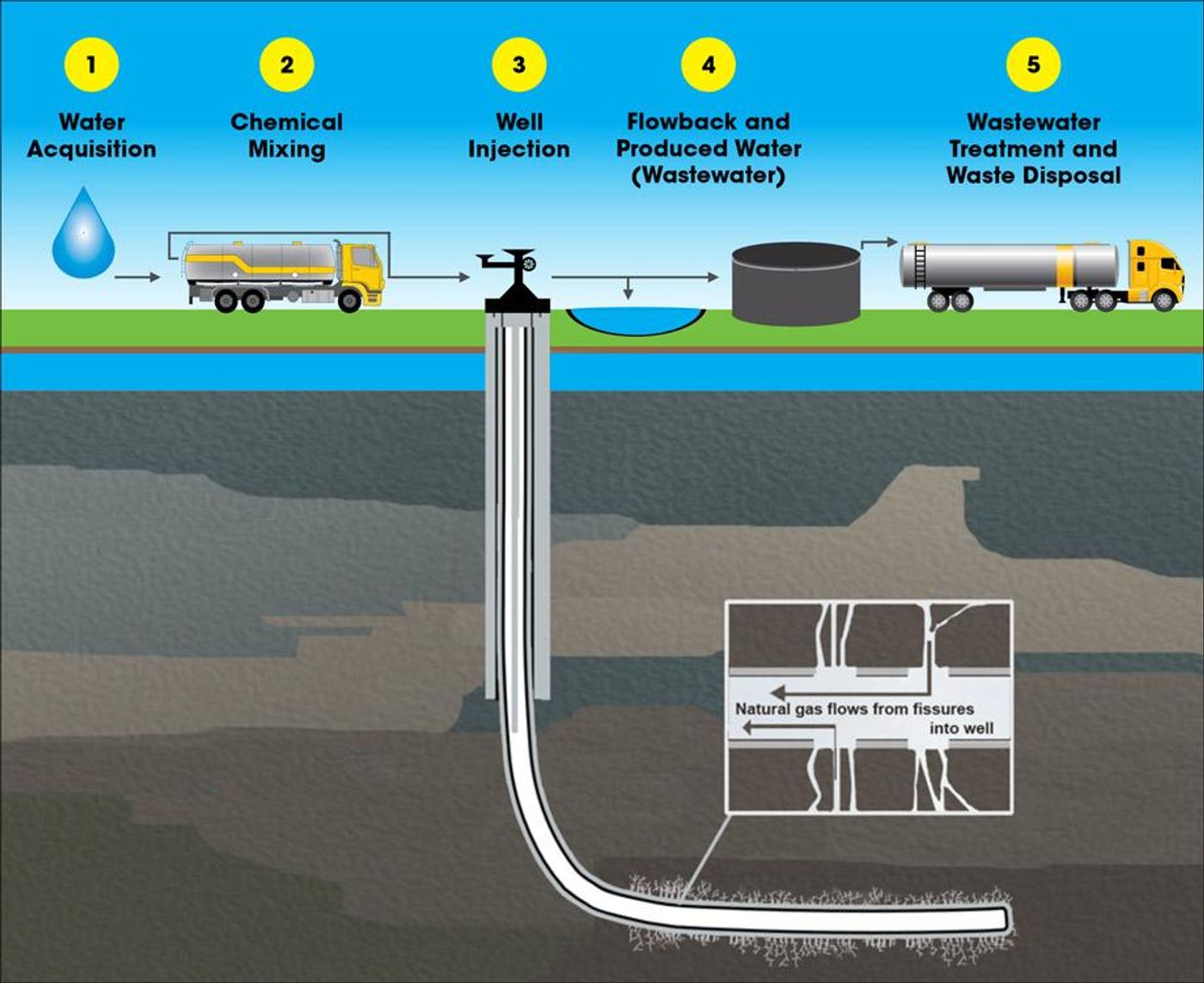I couldn’t pass up the chance to write about “Frackibacter”. Candidatus Frackibacter is a potentially new genus of bacteria discovered living in hydraulic fracturing wells.
Hydraulic fracturing, “fracking” for short, is the process of injecting fluid into underground rock, forcing oil and gas to the surface where it can be collected. The injected fluid also returns to the surface, at which point it is called “produced water”. I’m no geologist, so that’s the extent of my fracking expertise.
Researcher from The Ohio State University set out to learn what types of bacteria (if any) may be living in fracking wells. They sampled the produced water from two wells in the Marcellus and Utica shale formations over a period of 328 days and used sequencing techniques to identify any associated bacteria.
The group identified 31 genera of bacteria that appear to thrive inside fracking wells. Most of these bacteria probably came from outside sources - transported in on equipment or water used for fracking. Frackibacter, on the other hand, represents a brand new genus, hence its designation “Candidatus”.
One genus, Halanaerobium, dominated both wells. This is especially cool because the wells in the Marcellus and Utica formations are very different. They are also run by different companies that use different types of fracking fluids.
Halanaerobium is often found in haloalkaline lakes where it produces biohydrogen. The bacteria living in these wells have to be pretty tough cookies - they experience high temperatures, salinity, and pressure.
According to study author Kelly Wrighton, “we think that the microbes in each well may form a self-sustaining ecosystem where they provide their own food sources. Drilling the well and pumping in fracturing fluid creates the ecosystem, but the microbes adapt to their new environment in a way to sustain the system over long periods."
Since the wells are very salty, many bacteria produce osmoprotectants. When these bacteria die, they release the osmoprotectants. These chemicals are then used as a food source by
Halanaerobium and
Frackibacter. Then, these bacteria produce food for methanogens (which produce methane). Voila! A happy little ecosystem is born.
Sources: Science Daily, Wikipedia









